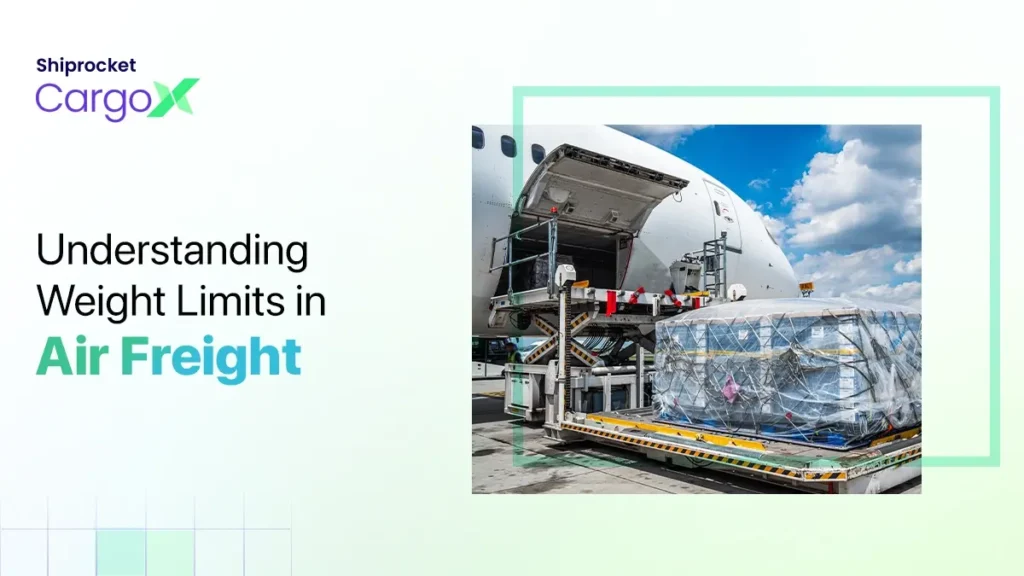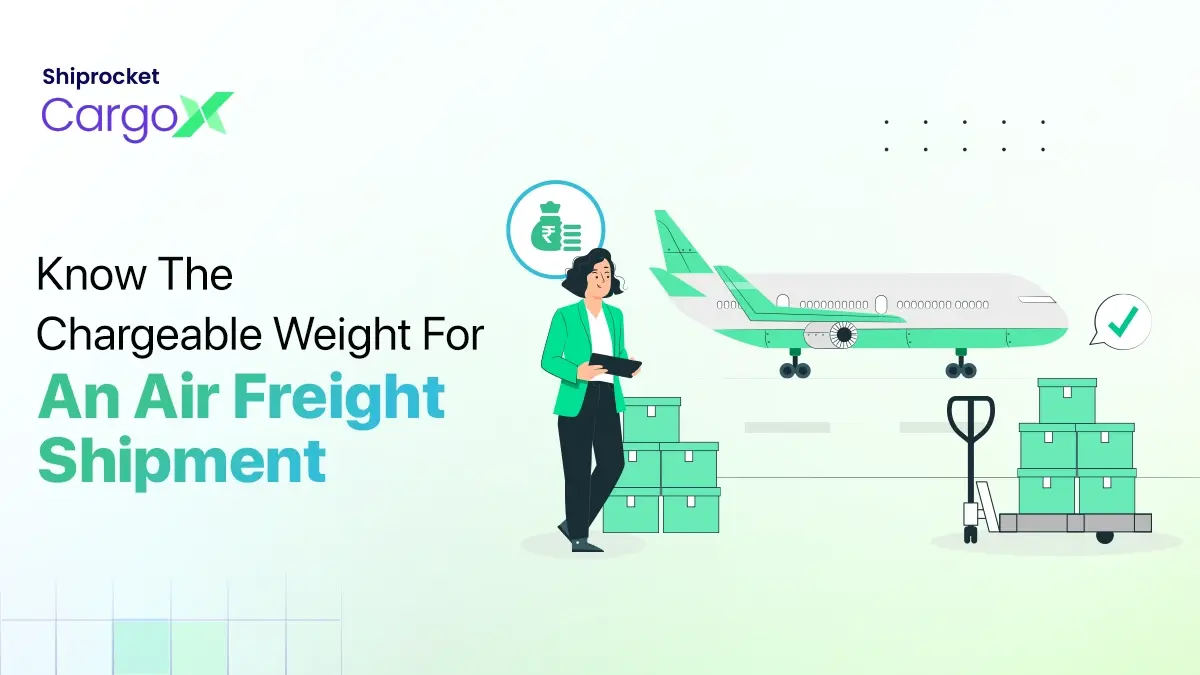When Is Your Cargo Too Heavy for Air Freight?
Understanding the weight restrictions related to cargo transportation is important for any business dealing with the air freight industry for their shipping needs. These limitations are essential for smooth logistics since they ensure safety without compromising efficiency. It takes careful attention to detail, commitment to strict standards, and deep knowledge of the factors impacting weight constraints, to safely guide aeroplanes with goods. From the maximum gross weight allowed to other cargo limits, every factor is essential to guarantee the effectiveness, productivity, and integrity of air freight operations.
In this article, we explore the details of weight restrictions for air freight and the important methods for handling heavy cargo skillfully and precisely.

Weight Limits in Air Freight
Weight limits in air freight services refer to the maximum weight that an aircraft can transport at a time. There are some major weight limits for air freight to keep in mind, which are mentioned below:
- Maximum gross weight (MGW) allowed: Each aircraft has a particular maximum gross weight (MGW) that it can carry. This is set by airlines or other regulatory authorities based on the aircraft’s size, structure, fuel demands, efficiency, and other aspects. The maximum gross weight includes the weight of the cargo, shipping materials, packaging, containers, etc. Carrying excess weight may lead to the aircraft’s poor performance, chances for accidents, damage to structures, and more. To minimise the possibility of your consignment experiencing extra costs or being rejected, the shipment weight calculation needs to be done precisely following the limit criteria.
The maximum gross weight allowed for air freight varies based on the airline you choose. Even so, it often ranges between 100 and 500 kilos per shipment. If the shipment weighs more than this quantity, it may still be delivered by air, subject to the rules and limitations of the airline.
- Per piece weight limit: Piece weight means the weight of each piece within the package. The airline authorities also have specific restrictions for piece weight, which vary according to different factors like aircraft type, airline policies, handling efficiencies, shipment destination, etc. These piece weight limits are important to ensure proper weight distribution in the aircraft and maintain balance in the aircraft for a stable flight.
- Dimensional weight of the package: Airline authorities consider the dimensional weight of the shipment while calculating air freight charges. The dimensional weight is calculated as per the size and volume of the shipment, considering its width, height, length, etc.
Cargo Restrictions for Any Special Item
Airlines and airline authorities have imposed additional requirements and specific limitations on the goods transported. These include necessary permits, certificates, specific handling procedures, etc., for special types of cargo shipments. These special cargo types include oversized or bulky materials, high-value items, fragile items, hazardous materials, decomposable or easily destructive goods, live animals, etc.
Implications of Carrying Overweight Cargo on Aircraft
Some of the significant implications of carrying overweight cargo on an aircraft are as follows:
- According to the Federal Aviation Administration (FAA), overweight cargo in an aircraft leads to failed flights and structural defaults. The flight performance can also be affected, including in-flight emergencies, its ability to land, climb and take off safely, reduced manoeuvrability, decreased cruising speed, etc.
- Overweight aeroplanes use more fuel, have a shorter range, have less efficiency, etc. Excess baggage weight reduces the aircraft’s overall capacity and affects flexibility and profits. This forces airline regulators to set limits on the amount of goods, profit, fuel, or passengers that can fly.
- Strict guidelines on maximum weight, aircraft safety, and other matters are enacted by airline regulating organisations such as the Federal Aviation Administration (FAA), the International Civil Aviation Organisation (ICAO), and others. If the requirements are not met by airline companies, the authority charges fines or takes strict action.
- If there is excess cargo on an aeroplane, the airline sector collects additional costs to cover the higher fuel consumption, weight, operations, etc.
- Since an overweight flight uses more fuel to operate, it also has a financial strain on the airline. The expenses and profits of the airline are impacted by excessive fuel use during flights.
- The requirement to reweigh, reorganise, or shift excess weight can result in delayed flights, scheduling issues, and dissatisfied customers, all of which can negatively impact an airline’s profits.
Managing Heavy Cargo
Managing overweight or heavy cargo can be difficult sometimes if the shipper does not follow these conditions:
- Plan to handle the goods properly
- Follow regulations or rules
- Communicate well while transporting
Here are some suggestions for you to manage heavy cargo efficiently:
Conduct pre-shipment planning and research:
- It is important to assess the weight, nature, type, and dimensions of the shipment beforehand. You should then choose an appropriate type of aircraft to transport the shipment as per the consignment’s size, weight, and destination.
- Check with the chosen airlines and authorities about their regulations and restrictions about weight and other things to avoid any rejections at the last minute.
Preparing the package:
- Sturdy and appropriate packaging material should be used to securely pack the shipment. Make sure to spread the weight evenly while packing to prevent any stability issues with the shipment during transportation.
- Labelling the shipment with accurate weight information is very important for a seamless handling and loading process.
Documentation of the shipment:
- Documents for the shipment should be prepared beforehand as per the airline’s requirements, including shipping manifests, customs paperwork, air waybills, dimensions, content of cargo, weight details, etc.
- Get any significant certifications, licences, and permits required by the authorities beforehand for transporting any heavy or special cargo.
Coordinating and Monitoring:
- Make sure to communicate and coordinate with the airlines, including ground staff, any other service providers, freight forwarders, etc. Provide them with detailed instructions about handling, loading, and unloading of the package to ensure a secure and efficient process.
- Use appropriate tracking and monitoring systems provided by the airlines to get the real-time status of the shipment.
Conclusion
The importance of efficient weight management in air freight cannot be over-emphasised, as more and more packages are being transported from one place to another by air cargo. Knowing weight restrictions is essential for effective air freight logistics, as it may sustain safety standards and maximise operating efficiency. Therefore, keep in mind that managing weight limitations is about raising the standards for safety, effectiveness, and dependability in air transportation and not simply about adhering to regulations. When you entrust a 3PL partner like Shiprocket’s CargoX to transport your consignments on air freight, you don’t need to worry about the shipping processes and weight limitations. They put no weight restrictions on your goods and will take care of the entire paperwork needed for moving your heavy goods across borders.




